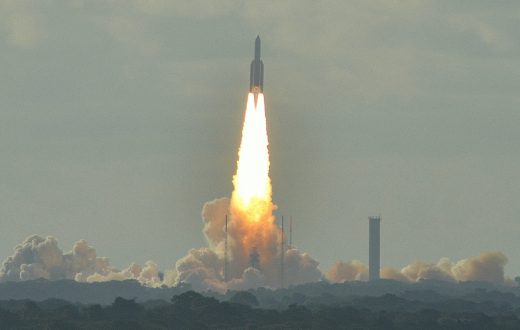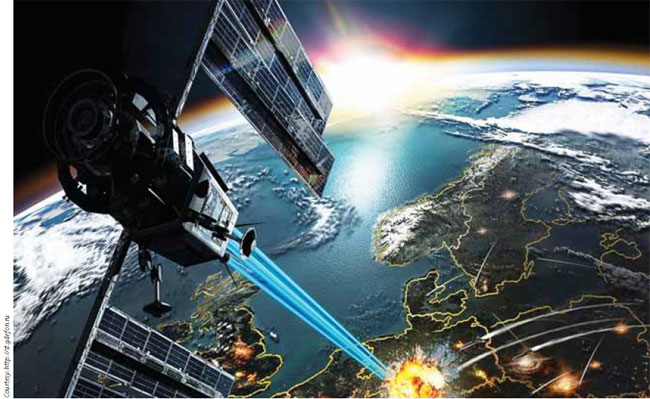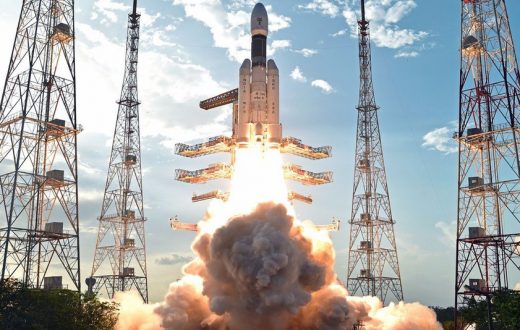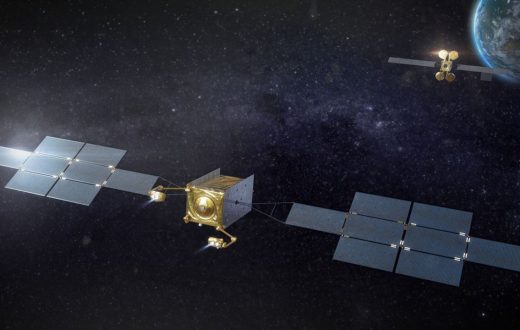Forecast
- Countries will continue to develop anti-satellite weapons to counter space-based military assets, including existing communications satellites and potential weapons.
- However, as improved technology lowers costs and more countries deploy satellites and anti-satellite technology, space debris will become a bigger problem for all militaries with a stake in space.
- Ultimately, with the U.S. military the most reliant on space-based technologies, the United States will have the most to lose from advances in other countries’ anti-satellite systems.
Analysis
The militarization of space started long ago, but true weaponization has yet to begin in earnest, at least publicly. Modern militaries depend on satellites for a number of vital functions. Orbital platforms act as a force multiplier for terrestrial operations and enable thermal image acquisition, weapons targeting through GPS and worldwide communications. Though space weapons have not yet been effectively deployed, the threat that they could be — and the widespread use of non-weaponized satellites for military purposes — has led countries to rush to create anti-satellite weapon technology as a deterrent. The problem is that this anti-satellite technology (widely referred to by the acronym ASAT) can also be used to target any satellites in orbit, particularly those used by the United States and its allies. The deployment of ASATs, though, comes at a price: The more anti-satellite weapons are used, the more debris from destroyed satellites is created as a result. This debris is continually and indiscriminately harmful to commercial and military satellites alike, and the situation is only getting worse.
ASAT technology first became apparent during the Cold War, but over the last decade it has become an area of intense competition for the world’s most capable militaries. And as these militaries develop and refine the associated technologies, ASAT capability will become cheaper and more accessible to smaller militaries. More nations will inevitably join the reinvigorated space race, as Iran and North Korea already have. The problem is that the more satellites are destroyed, the more space debris is created, which poses an indiscriminate threat. Yet there is little alternative. Larger militaries want the assurance that they can counter any attempt to weaponize and militarize space, and international endeavors have largely failed to provide those assurances through diplomatic means.
Space Race Redux
Once a country shows an interest in boosting its space capabilities, all others become concerned about the potential ramifications and follow suit.China began testing its ASAT capability as early as 2005 and in 2007 successfully destroyed a defunct weather satellite. This was the first successful, unclassified ASAT test by any country in more than two decades. Since then, Russia and the United States have also displayed their own ASAT capabilities, and in the last six months both China and Russia have carried out further tests, though they did not actually destroy a satellite.
Such tests are really a matter of deterrence rather than a response to space weapons. The United States still maintains that its testing was done to remove satellites with problems. The fact is that no offensive or defensive weapons have been deployed in space — at least none that have been publicly disclosed. The closest thing that exists to space weaponry today is the Inter-Continental Ballistic Missile (ICBM), which has a suborbital spaceflight trajectory that goes well into low-Earth orbit.
Actually putting weapons in space poses a number of problems. Any space-based arsenal, along with its associated systems, would be incredibly susceptible to attack and extremely cost inefficient. Satellites are vulnerable by nature, and weapons platforms would require some form of point-defense system, either integrated or stationed nearby. An effective space-based missile system would also require a massive number of satellites to sufficiently cover any given area of Earth. Reloading would also be expensive and time-consuming. For these practical reasons, the United States has suspended all of its unclassified space weaponization initiatives — including the “Star Wars” program of the 1980s — and has focused its attention instead on cheaper ground-based systems.
Despite the suspension of its space-based weapons programs, the United States continues to nurture its ASAT capabilities. Washington seeks to defend itself from other countries with a desire to weaponize space, while also protecting allied non-weapon satellites. Other countries remain interested in ASAT technology because it enables them to critically enfeeble the U.S. military. In effect, the United States’ technological advancement is also a potential weakness. Simply put, satellites are difficult to defend: Their orbits are relatively predictable and they are hard to hide and maneuver.
ASATs: A Short History
ASAT development was a major part of the Cold War space race. As soon as it became obvious that satellites would soon have military importance, ASAT technology became a national security priority for both Washington and Moscow. The United States and the Soviet Union successfully tested various ASAT platforms, demonstrating the ability to take down each other’s satellites. In a sense this game played out similar to nuclear deterrence theory, as both countries recognized that attacking the other’s military satellites would result in a proportional response — one that was largely indefensible.

During this period, there was also a great deal of mutual cooperation when it came to regulating space. There were several — albeit limited — treaties devoted to terms of competition, including a ban on deploying nuclear weapons to space or even on the moon. The first ASATs lacked sophisticated guidance systems and nuclear blasts were conceived as a way to compensate for this deficiency. However, an outright ban on anti-satellite weapons was never achieved, despite frequent diplomatic efforts and periodic voluntary bans by the United States and the Soviet Union. One thing did, however, become clear: ASATs do not simply pose a conventional security risk. The debris created by the destruction of satellites forms a significant environmental hazard for all countries with business in space.
As competition between Russia and the United States eased, so did the focus on ASAT technology. That changed in 2007, when China became the third country to destroy a satellite in orbit. Beijing staged further tests in 2013 — with the highest suborbital rocket launch in several decades — and again in October 2015. In response, Russia has become more aggressive in pursuit of its own ASAT program, essentially showcasing its capabilities, which had come under question since the fall of the Soviet Union and the demise of its associated military programs.
Russia conducted ASAT tests last November, and recently announced plans to modify some of its existing ICBMs to target 99942 Apophis, an asteroid that will come close to Earth in 2036. The United States, for its part, demonstrated its own ASAT capabilities in 2008, one year after China’s first test. Washington targeted a satellite that allegedly posed a threat to other satellites. Space is once again becoming an arena for multinational competition, even beyond the United States, Russia and China. Still, that does not mean there will be a massive weaponization of the near-Earth environment any time soon. Even the largest militaries are constrained by cost and efficiency when planning space programs. ASAT technology, though, will be the first focus. While technically not a space weapon, anti-satellite systems can deter further weaponization as well as attacks against satellites in general. North Korea, South Korea, Japan, India, Iran and Israel could all begin pursuing ASAT capabilities in the near future.
Protecting Space Assets
Various militaries are also trying to address the question of how best to defend against ASAT attacks. The major concern is that satellites are inherently vulnerable to existing surface-based systems. Anything circumnavigating the Earth is difficult to hide: Satellites follow predictable orbits and have minimal maneuverability because of physics and propellant limitations.
Redundancy is one of the most practical ways to limit the threat posed by ASATs. Drones could potentially replace some of the functionality of satellites in the near future, and the proliferation of tiny, comparatively cheap CubeSats offers tantalizing possibilities. But both of these options are complicated and resource intensive, meaning that only the United States could perhaps broadly adopt selected alternatives to satellites. China and Russia could pursue localized alternatives, but other countries would be severely constrained in their approaches.
The United States relies the most on space for military purposes, and in a way that is a significant departure from the deterrence dynamic of the Cold War. This dependence makes the United States particularly vulnerable to attack, and it reduces the potential cost to any attacker. However, a nation that deploys anti-satellite weapons to destroy enemy satellites creates a potential risk to its own space capabilities, thanks to the creation of debris. So, as militaries work to hone their ASAT capabilities, they must also work to find ways to reduce the creation of space debris and to protect their satellites from it. Japan has already begun testing a “space net” type satellite that would glide through space, capturing debris. A space net would have immediate applications in an anti-satellite role, if it were deployed that way. And, like any other threat, ample consideration must be given to effective countermeasures.
The development of space-based military systems as well as surface-based weapons to counter them is costly and not without challenges. As a result, the technology will be slow to develop. However, it is clear that the militarization of space will only increase. As noted, China, Russia, and the United States are already developing their space technology alongside the weapons needed to target opposing space technologies. Other nations will follow suit, if they are not already doing so. Unfortunately for the United States, as the country with the most reliance on space-based systems, it will continue to be the most vulnerable party as this new space race continues, at least for the foreseeable future.







